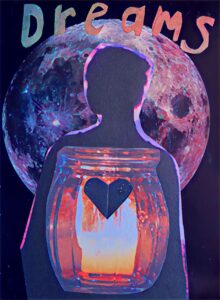It is not as popular as it used to be for working with dreams in therapy. However, I work with most of my clients deeply with their dreams. It helps us uncover unconscious core patterns, resolve issues, and is deep aspect of our healing work together.
The First Dream in Therapy
In Jungian theory, the first dream a person comes to therapy with is the initial conditions of the therapeutic process. This dream tells the dreamer and the therapist what the therapy will be about. It speaks about the therapeutic relationship. It also provides themes about the dreamer’s core issues. These issues become the goals for therapy.
Components of Dreams
Furthermore, the dream has components related to the emotional, internal world of the dreamer. There are also components of the dream that relate to the dreamer’s relationship to others and also their relationship to the greater world as a whole. The dream will introduce themes that give insight on the dreamer’s concerns, issues, and opportunities for personal development. The dream then provides clues about the main issues and possible solutions. It may also give hints about blocks that must be overcome or about how the current behaviors may not be working.
A Note on Dream Dictionaries
The dream works as a whole to give information to the dreamer and the pattern analyst. This is how the therapy process is different than looking up information in a dictionary. A dictionary can only provide information on one symbol. This is just like looking up the meaning of a word in a foreign language in a language dictionary. You may wind up with the literal meaning of one word, but you won’t have any context.
Beyond Dream Dictionaries: Dreams in Context
Dream symbols arise for a dreamer in context. On the personal level, it includes the dreamer’s history, their family, and their culture. On the wider level, the dream occurs during a time that includes current events, cultural norms, and cultural history. Furthermore, the dream reflects on the dreamer and their relationship with their therapist as well.
As new dreams arise through the course of working with dreams in therapy, they continue to give clues to the dreamer about the progress of therapy. Here they speak about the ongoing, developing needs of the client.
Dream Weirdness- Complexes!
Another component of dreams are dissonance or bizarre aspects. These oddities illustrate complexes. Complexes are packets of psychic energy that, according to Jungian theory, are the result of learned coping mechanism or the result of trauma. In dreams, complexes show where the dream may be seeing things through a warped lens.
Here is the learning opportunity!
Dream Meaning Related to World Events
Think about having a dream about going to a crowded nightclub or concert in the year 2020. This dream conveys relevancy about social distancing and events that may even be currently against the law. This dream location would not have had a significant meaning by itself in 2019. How the current events of the pandemic includes rules, laws, and social attitudes change the meaning of this dream location for this dream today. Also, the dream pattern analyst takes into account the dreamer’s current choices and actions. The dreams attitude toward what constitutes as appropriate actions in public changes the context and the meaning of the dream.
This is an example of how current events affect a dream’s meaning. It also is an example of how beliefs and social norms affect the dream’s meaning.

The dream’s normal behaviors are another factor that a dream pattern analyst would
consider. For example, a person who is currently attending bars regularly would be different than a dreamer who has been staying at home, not going out, and doesn’t in fact, even go to bars before the pandemic.
Each one of these factors are taken into account during dream analysis. Layers of these factors add layers of meaning to the dream. Dreams has the amazing ability to use metaphor and repetitive themes to make complex comparisons.
Conclusion: Working with Dreams in Depth Psychology
Dreams give us messages from deep within our unconscious. So working with dreams in therapy, the dream, our ego, our waking, conscious, rational mind, gives over control. The unconscious mind speaks through dream images. In depth therapy, messages from the unconscious help the dreamer and the therapist realign the individual to their true self.
In this process there is the potential for healing, well-being, and wholeness.

